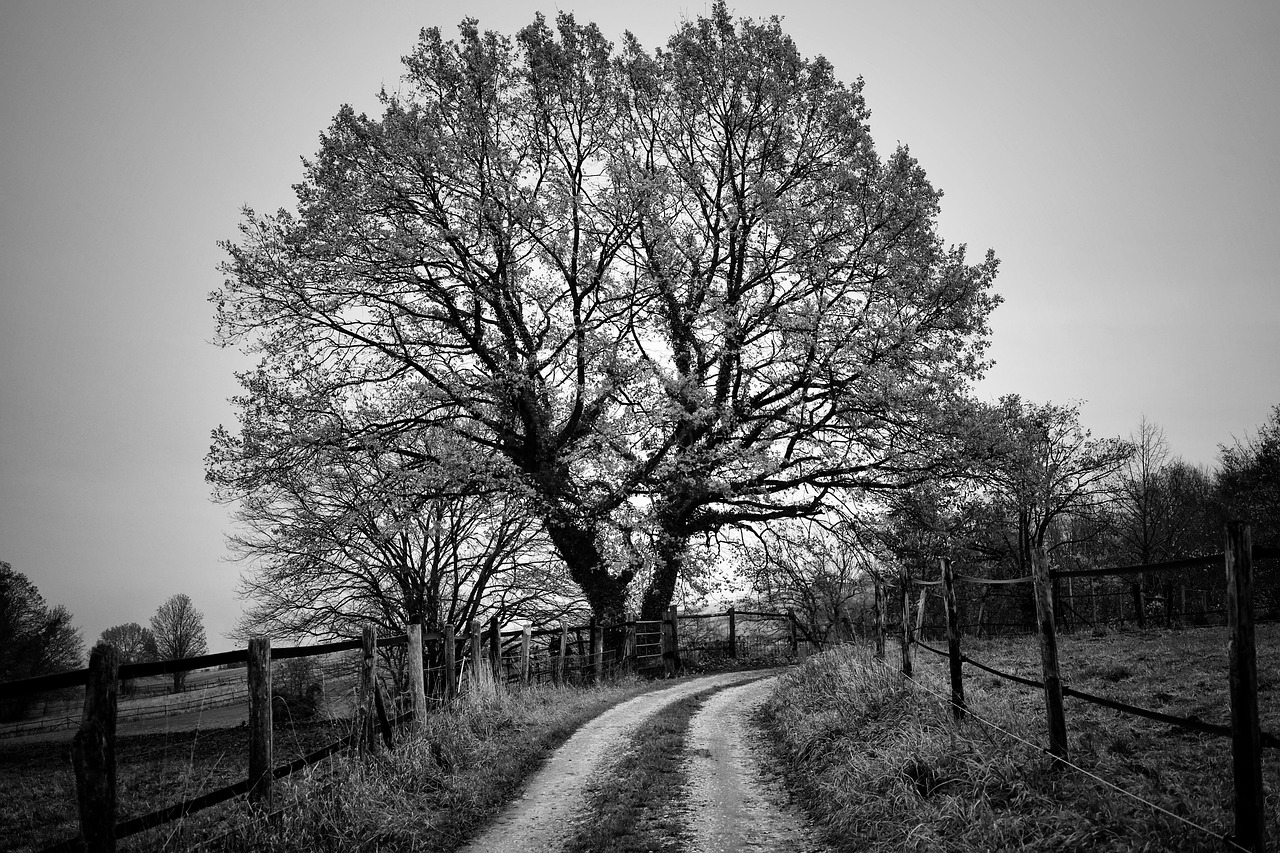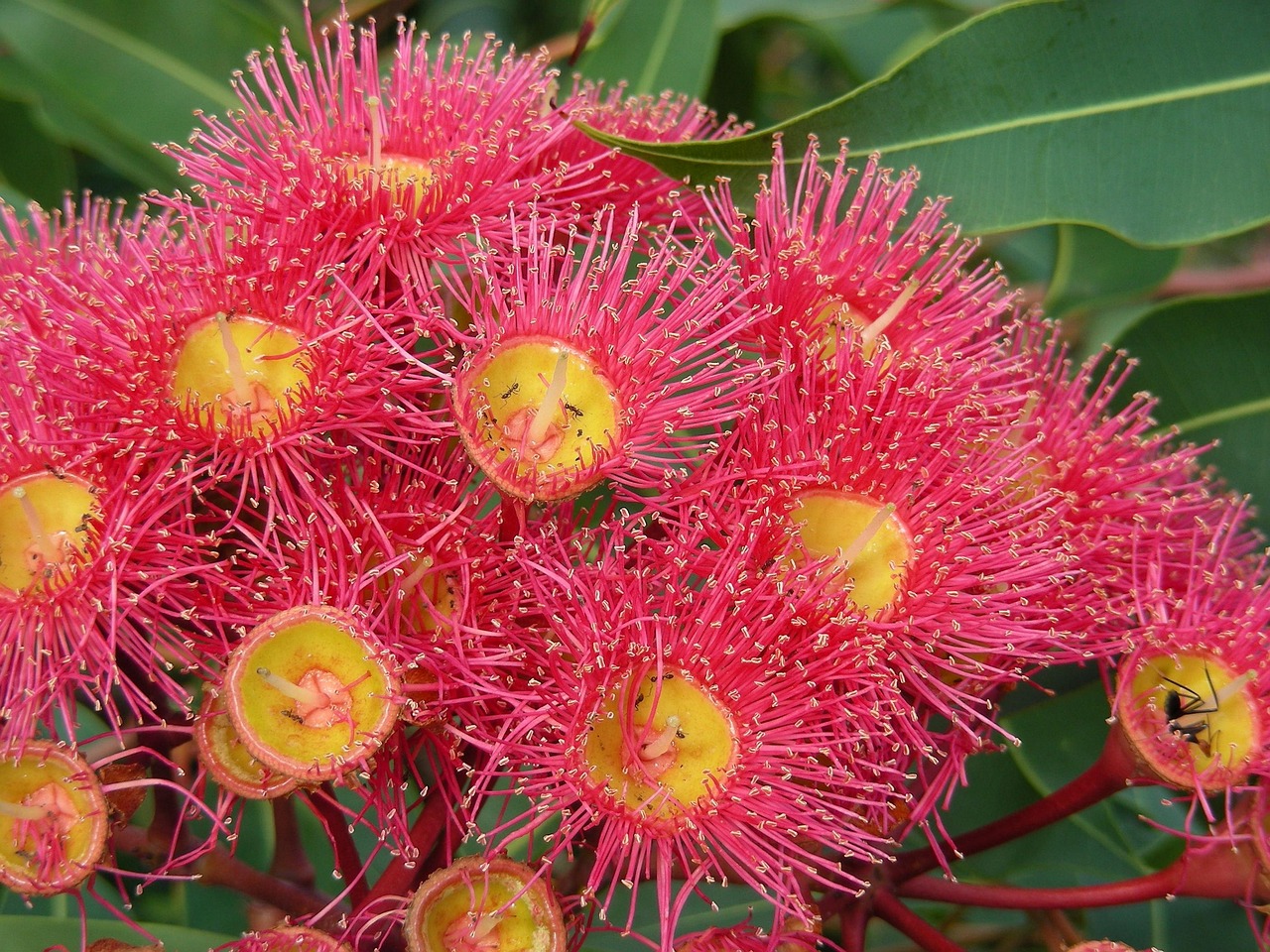The Black Gum tree, also known as Nyssa sylvatica, typically grows at a rate of 1 to 2 feet per year in wetland planting zones. This growth rate can vary based on soil conditions, water availability, and overall climate.
The Black Gum tree is a deciduous tree native to the eastern United States. It is well adapted to wetland environments, thriving in areas with moist soil. This adaptability makes it an excellent choice for restoration projects and wetland planting zones where other species may struggle.

In addition to its ecological benefits, the Black Gum tree is valued for its striking fall color, which ranges from yellow to deep red. This color change not only adds aesthetic value to landscapes but also supports local wildlife by providing food and habitat. The tree produces small, dark blue fruits that are a food source for birds and other animals.
Growth Characteristics of the Black Gum Tree
The growth characteristics of the Black Gum tree are essential to understand for successful planting and management in wetland areas. Its growth rate, height, and spread can greatly influence the surrounding ecosystem.
Black Gum trees typically reach a mature height of 30 to 50 feet, with some individuals growing even taller under optimal conditions. The canopy can spread out 20 to 30 feet wide, providing ample shade and shelter for various organisms.

| Characteristic | Details |
|---|---|
| Growth Rate | 1 to 2 feet per year |
| Mature Height | 30 to 50 feet |
| Canopy Spread | 20 to 30 feet |
| Soil Preference | Moist, well-drained soils |
The Black Gum tree prefers moist soils often found in wetlands and along riverbanks. It can tolerate short periods of flooding, making it a suitable candidate for wetland restoration. However, it also grows well in drier conditions once established, demonstrating its versatility.
This tree’s root system is another critical aspect of its growth. The roots are fibrous but can develop deep taproots in favorable conditions. This adaptation allows the Black Gum tree to access deeper water sources during drier periods, contributing to its resilience in fluctuating environments.
Environmental Considerations
When planting Black Gum trees in wetland zones, several environmental considerations should be taken into account. These factors include water availability, soil type, and potential competition from other plant species.

The availability of water is crucial for the growth of Black Gum trees. While they thrive in wet conditions, prolonged drought can hinder their growth and survival. Therefore, it’s essential to monitor water levels and ensure that the trees have access to adequate moisture throughout their growth cycle.
The soil type also plays a significant role in the health of Black Gum trees. They prefer soils rich in organic matter, which support better nutrient availability. Conducting soil tests before planting can help determine if amendments are necessary to enhance soil fertility.
Planting and Care Tips
To ensure successful growth of Black Gum trees in wetland planting zones, several planting and care tips can be followed:

- Select a planting site that remains consistently moist but not waterlogged.
- Prepare the soil by incorporating organic matter to improve drainage and nutrient content.
- Space trees appropriately to prevent overcrowding as they mature.
- Water newly planted trees regularly until their root systems are established.
- Monitor for pests and diseases that may affect growth and health.
These practices will help promote healthy growth and longevity of Black Gum trees in wetland ecosystems. By carefully considering their needs and environment, these trees can thrive and contribute positively to their habitats.
Benefits of Planting Black Gum Trees
Planting Black Gum trees in wetland zones offers several ecological and aesthetic benefits. Understanding these advantages can help landowners and conservationists appreciate the importance of incorporating this species into their planting plans.
One of the primary benefits of Black Gum trees is their ability to improve biodiversity in wetland ecosystems. They provide habitat for numerous species, including birds, insects, and small mammals. The fruit produced by Black Gum trees is particularly valuable for birds, which rely on it as a food source during their migratory periods.
Furthermore, Black Gum trees play a significant role in water quality improvement. Their root systems help stabilize soil and reduce erosion. This stabilization prevents sediment from entering waterways, maintaining cleaner water and supporting aquatic life.
Wildlife Habitat
The Black Gum tree serves as an important habitat for wildlife. Various species benefit from its presence in wetland areas:
- Birds: Many bird species, including songbirds and woodpeckers, use Black Gum trees for nesting and feeding.
- Mammals: Small mammals may find shelter in the tree’s branches or under its canopy.
- Insects: The tree attracts a range of insects, providing a food source for birds and other predators.
The variety of life supported by Black Gum trees contributes to the overall health and resilience of wetland ecosystems. This interconnectedness emphasizes the need to protect and restore these vital habitats.
Soil Improvement and Erosion Control
Black Gum trees play an essential role in enhancing soil quality and controlling erosion within wetland areas. Their deep root systems help anchor the soil, preventing loss during heavy rains or flooding events.
As they grow, Black Gum trees also contribute organic matter to the soil through leaf litter and decaying branches. This addition improves soil structure and fertility over time, benefiting not only the trees but also other plants in the area.
The ability of Black Gum trees to mitigate erosion can be especially valuable in regions prone to runoff or flooding. Their presence helps maintain soil integrity and supports the surrounding vegetation.
Climate Resilience
The adaptability of Black Gum trees to various environmental conditions makes them an excellent choice for climate-resilient planting. They can survive in both saturated soils and drier conditions once established, which is particularly beneficial given the changing climate patterns affecting many regions.
By selecting native species like the Black Gum tree for planting projects, land managers can enhance the resilience of ecosystems against climate change impacts. These trees can better withstand fluctuations in temperature and precipitation compared to non-native species.
Considerations for Planting
While Black Gum trees offer many benefits, certain considerations should be taken into account when planning a planting project:
- Site Selection: Choose locations with adequate moisture levels to support growth, ensuring that the site aligns with the tree’s natural habitat.
- Spacing: Allow sufficient space between trees to promote healthy growth and prevent competition for resources.
- Maintenance: Regularly check for signs of pests or diseases that may threaten the health of young trees.
- Long-Term Planning: Consider how the trees will integrate into the surrounding ecosystem as they mature.
By addressing these considerations, landowners and environmentalists can maximize the success of their Black Gum tree planting efforts.
Pests and Diseases
Like all tree species, Black Gum trees are susceptible to various pests and diseases that can affect their growth and health. Awareness of these potential threats is crucial for successful management.
Some common pests include:
- Leaf Spot: Caused by fungal infections, this can lead to premature leaf drop.
- Aphids: These small insects can weaken trees by sucking sap from leaves and stems.
- Scale Insects: These pests can also damage foliage and branches while providing a breeding ground for sooty mold.
To manage these pests effectively, regular monitoring is essential. Early detection allows for timely intervention using cultural practices or targeted treatments when necessary.
Diseases that may affect Black Gum trees include root rot and canker diseases. Maintaining proper soil drainage can help prevent root rot, while ensuring good air circulation around branches can minimize the risk of canker infections.
Propagation Techniques for Black Gum Trees
Effective propagation is essential for successful planting and establishment of Black Gum trees in wetland areas. Various methods can be used to propagate these trees, each with its own advantages and considerations.
Seed Propagation
Seed propagation is one of the most common methods for growing Black Gum trees. The process involves collecting seeds from mature trees and preparing them for planting. Here are the basic steps:
- Seed Collection: Collect seeds in the fall when they are ripe. The fruit will typically turn dark blue or black.
- Seed Cleaning: Remove the fleshy outer layer of the fruit to access the seeds. This can be done by soaking the fruit in water and then rinsing.
- Stratification: Black Gum seeds require cold stratification to germinate. Place seeds in a damp medium (like sand) and refrigerate for 60 to 90 days.
- Planting: After stratification, plant seeds in prepared soil in spring. Ensure that they are sown at a depth of about 1 inch.
This method can produce a large number of trees, but it requires patience as germination may take several weeks to months.
Vegetative Propagation
Vegetative propagation, such as through cuttings, is another viable method for establishing Black Gum trees. This approach can produce genetically identical plants and is useful for maintaining desired traits.
- Cutting Selection: Select healthy, semi-hardwood cuttings from the current season’s growth. Cuttings should be about 6 to 8 inches long.
- Preparation: Remove leaves from the lower half of each cutting to reduce moisture loss.
- Rooting Hormone: Dip the cut end of the cutting in rooting hormone to encourage root development.
- Planting Cuttings: Insert cuttings into a well-draining potting mix and water thoroughly. Keep them in a humid environment until roots develop.
This method allows for faster establishment compared to seed propagation but may yield fewer plants at a time.
Water and Nutrient Requirements
Understanding the water and nutrient needs of Black Gum trees is essential for promoting healthy growth in wetland planting zones. These trees thrive best in consistently moist conditions but can adapt to varying levels of water availability.
Water Requirements
Black Gum trees require regular watering, especially during their establishment phase. Once established, they can tolerate periods of drought but will perform best with consistent moisture.
- Establishment Phase: Water newly planted trees at least once a week during dry spells. Ensure deep watering to encourage root development.
- Mature Trees: Established Black Gum trees can survive with less frequent watering, but regular rainfall or supplemental irrigation during dry seasons will promote optimal growth.
Nutrient Requirements
Nutrient management is also crucial for Black Gum trees. They benefit from well-balanced soil rich in organic matter. Here are some guidelines:
- Soil Testing: Conduct soil tests to determine nutrient levels and pH. This information will guide any necessary amendments.
- Fertilization: Apply a balanced fertilizer in early spring or late fall as needed, based on soil test results.
- Organic Matter: Incorporate compost or well-rotted manure into the soil to enhance fertility and improve moisture retention.
Proper nutrient management can lead to healthier trees that are more resilient to pests and diseases.
Landscape Uses of Black Gum Trees
The aesthetic appeal and ecological benefits of Black Gum trees make them suitable for various landscape applications. Their unique characteristics can enhance both residential and public spaces.
Ornamental Uses
The striking fall coloration of Black Gum trees makes them popular choices for ornamental landscaping. They provide vibrant hues that can brighten any landscape during autumn.
- Shade Trees: The broad canopy offers excellent shade, making them ideal for parks and large gardens.
- Specimen Trees: Their unique shape and coloration make them attractive focal points in garden designs.
Erosion Control
The robust root system of Black Gum trees assists in preventing soil erosion, particularly along riverbanks and in wetland areas. Their ability to stabilize soil makes them valuable for conservation efforts.
By incorporating Black Gum trees into landscape designs, landowners can enjoy both aesthetic beauty and environmental benefits, contributing positively to their local ecosystems.
Challenges in Black Gum Tree Growth
While Black Gum trees offer numerous benefits, several challenges can impact their growth and establishment in wetland planting zones. Understanding these challenges is essential for successful management and cultivation.
Environmental Stressors
Black Gum trees are resilient but can still be affected by various environmental stressors:
- Climate Variability: Changes in temperature and precipitation patterns can impact the growth rate and overall health of Black Gum trees.
- Soil Compaction: Compacted soils can restrict root growth and reduce the tree’s ability to absorb nutrients and water.
- Flooding: While they can tolerate temporary flooding, prolonged submersion may lead to root rot and other issues.
Addressing these stressors through careful site selection and management practices can help improve the success rate of Black Gum tree planting efforts.
Pest and Disease Management
In addition to environmental stressors, managing pests and diseases is crucial for maintaining healthy Black Gum trees. Regular monitoring and integrated pest management strategies are recommended:
- Cultural Practices: Promote tree health through proper watering, fertilization, and pruning to minimize pest infestations.
- Biological Controls: Encourage natural predators of pests, such as ladybugs for aphid control.
- Pesticides: If necessary, use targeted pesticides that are safe for beneficial insects and the environment.
By implementing these strategies, landowners can protect their Black Gum trees from potential threats while promoting a balanced ecosystem.
The Future of Black Gum Trees in Wetland Restoration
The role of Black Gum trees in wetland restoration initiatives is increasingly recognized as critical. As ecosystems face pressures from urban development, climate change, and habitat loss, integrating native species like the Black Gum tree becomes vital for sustainability.
Future restoration projects should focus on the following aspects:
- Community Engagement: Involving local communities in planting and maintaining Black Gum trees can foster stewardship and awareness of wetland ecosystems.
- Research and Development: Continued research into the growth patterns, pest resistance, and ecological benefits of Black Gum trees will enhance restoration efforts.
- Policy Support: Advocating for policies that support the planting of native species in conservation programs will promote biodiversity and ecosystem resilience.
The integration of Black Gum trees into restoration projects not only helps restore ecological balance but also enhances community green spaces and wildlife habitats.
Final Thoughts
In conclusion, the Black Gum tree stands out as a valuable species for wetland planting zones due to its growth rate, ecological benefits, and adaptability. Understanding its growth characteristics, propagation methods, and care requirements is essential for successful establishment.
The myriad benefits that Black Gum trees provide—ranging from supporting wildlife to improving soil stability—underscore their importance in both natural ecosystems and managed landscapes. As we face increasing environmental challenges, incorporating native species like the Black Gum tree into our planting plans will play a crucial role in promoting biodiversity and enhancing the resilience of our ecosystems.
By prioritizing the cultivation of Black Gum trees in wetland areas, landowners, conservationists, and communities can work together to preserve these vital habitats for future generations. Their ability to thrive in various conditions makes them a key player in sustainable landscape design and ecological restoration efforts.
Ultimately, the commitment to nurturing Black Gum trees not only enriches our environments but also contributes to a healthier planet. Through informed planting practices and community involvement, we can ensure that this remarkable tree continues to flourish in our wetlands for years to come.
